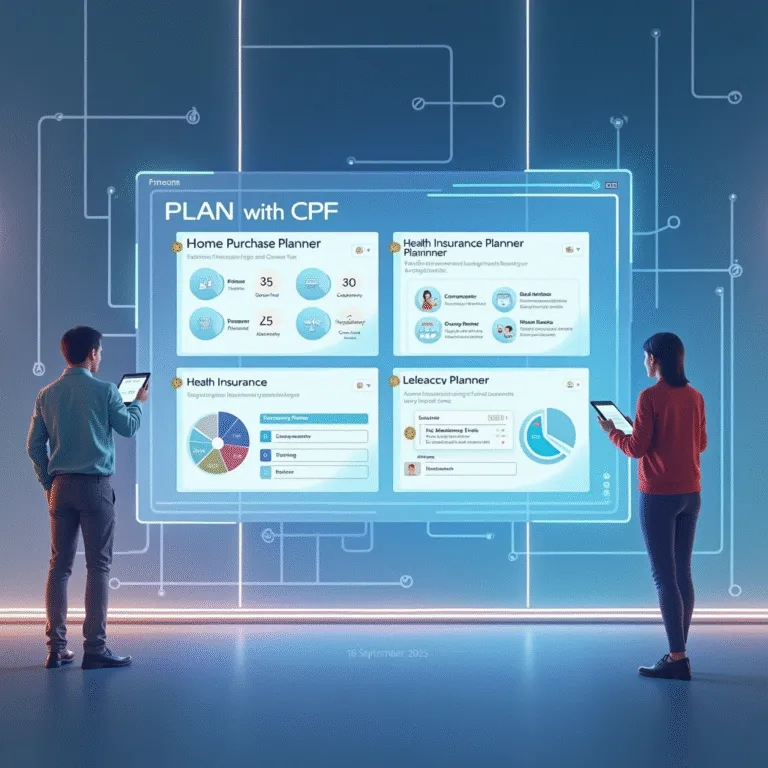Unlocking the Power of CPF: A Young Adult’s Guide to Savings, Housing, and Investment in Singapore
Hey there! If you’re a young adult navigating the world of personal finance, you’ve probably heard about CPF – Singapore’s Central Provident Fund. It’s that mandatory savings scheme that many think of as just some money that sits quietly, growing slowly in the background until retirement. But there’s more to CPF than just that. In fact, understanding how to effectively use and even invest your CPF can open up exciting opportunities, especially for housing and retirement planning.
Let’s dive into the essentials and clear up some of the common questions around CPF usage and investment, inspired by an insightful chat between ST business correspondent Sue-Ann Tan, Angeline Teo from the CPF Board, and Gen Z undergrad Quang Long.
What Are The Different CPF Accounts?
First things first: understanding the three main CPF accounts is crucial. Your CPF savings are divided into the Ordinary Account (OA), the Special Account (SA), and the Medisave Account (MA). Each one has its unique purpose and rules.
- Ordinary Account (OA): This is your most flexible account – think housing, education, and investment. The savings here can help you buy a home or invest in approved financial products.
- Special Account (SA): This account focuses on your retirement. The funds are meant to grow safely over time with higher interest rates compared to OA.
- Medisave Account (MA): This is for your healthcare needs – hospital stays, approved medical insurance, and other healthcare expenses.
Knowing which account does what makes a huge difference in planning how to use your CPF savings wisely.
How Does Your CPF Savings Grow?
One of the great things about CPF is that your savings enjoy government-guaranteed interest rates, which are fairly attractive compared to standard savings accounts. For example, the OA offers a base interest rate of 2.5%, while the SA and MA give you a healthier 4% or more, plus extra interest on the first $60,000 of your combined balances.
What does this mean? Your money is growing steadily, and this helps safeguard your retirement nest egg over the long haul. But since retirement is usually decades away for most young people, the temptation is often to tap into CPF more aggressively or even invest it.
Using CPF for Housing
Housing is a big deal in Singapore, and guess what? CPF is a popular way to finance it. The Ordinary Account funds can be used to pay for housing loans, down payments, and even monthly mortgage payments under approved schemes.
Using CPF for your property means you don’t have to dig into your cash savings as much, and your housing payments are partially funded by your own CPF funds. But remember, when you sell your property, you have to refund your CPF (plus interest) used for housing. So it’s important to plan carefully and not just assume your CPF won’t be affected in the long term.
What CPF Cannot Be Used For
It’s not all free-for-all when it comes to CPF. Some things are off-limits to protect your future wellbeing. For instance, you can’t use your CPF for everyday expenses, stock market trading without limits, or spending on unapproved investments. Also, CPF funds in the Special Account and Medisave Account have stricter usage rules to ensure that they serve their intended retirement and healthcare purposes.
Keep in mind that dipping into CPF for the wrong reasons could jeopardize your retirement plans.
How to Invest Your CPF
If you’re thinking about investing your CPF to potentially earn higher returns, the CPF Investment Scheme (CPFIS) allows you to invest your OA and SA funds in a selection of products like stocks, bonds, unit trusts, and even gold bullion.
It sounds cool, but there are important caveats:
- You must be at least 18 years old.
- There are limits on what you can invest in and how much of your CPF funds you can use.
- Investments carry risks, and you could lose money, meaning your CPF nest egg might shrink.
- It’s advisable to be well-informed and possibly consult a financial adviser before diving in.
For many young people like our friend Quang Long, who are still studying or just starting out, conservative use of CPF and understanding its purpose might be the safer bet.
Other Things To Consider When Investing Your CPF
Before committing your CPF funds to investments, think about your overall financial goals. Do you have enough in your Ordinary Account to cover your housing needs? Will investing your CPF impact your ability to buy your dream home?
Also, how secure is your retirement fund if market conditions turn south? Sometimes, the guaranteed interest rates CPF provides might be better than the risks of investing in volatile markets.
And don’t forget the rules and restrictions on when and how you can withdraw your CPF funds. Investing might tie your money up longer than you want.
Wrapping It Up
At the end of the day, your CPF is a powerful tool designed to help you achieve a stable retirement and meet essential needs like healthcare and housing. It’s tempting to think of it as a pot of cash you can play with, but it’s essential to use it wisely.
Whether you choose to invest your CPF or prioritize building a secure home or simply let your savings grow safely in the fund, the key is to understand how CPF works. Listening to experts like Angeline Teo from the CPF Board and learning from peers like Quang Long can guide you towards making smart choices.
Remember, retirement is closer than you think, so it pays to start early and think long-term. And if in doubt, chatting with a qualified financial adviser is always a good move.
For more tips and insights on personal finance and career growth, check out The Straits Times’ Headstart newsletter or tune in to their podcasts. Your future self will thank you!







